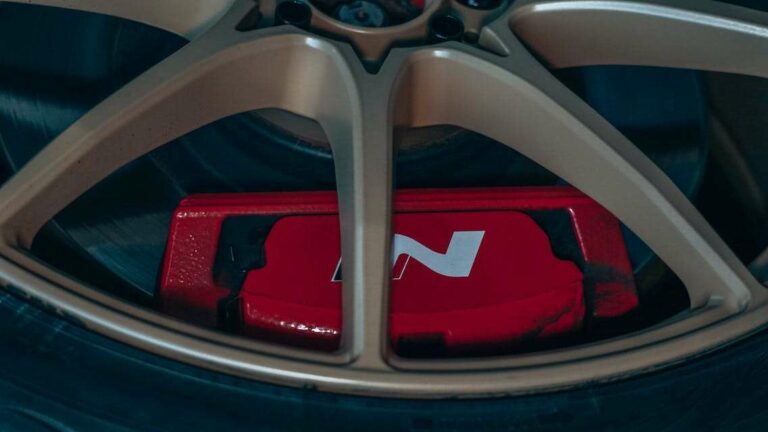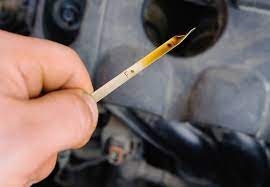Common reasons for failed WoF
In New Zealand, having a Warrant of Fitness (WoF) is necessary to make sure vehicles are safe on the roads. This inspection makes sure that cars and other vehicles meet safety standards before they can be legally driven. However, failed WoF inspections happen for various reasons. These reasons highlight important aspects of vehicle safety that need attention.
Understanding why failed WoF happens helps drivers know what to look out for. From worn-out tyres that affect grip on the road to faulty brakes that compromise stopping ability, each issue plays a role in vehicle safety. Malfunctioning lights, worn suspension parts, wheel alignments problems, and exhaust system defects are also common reasons for failing the WoF.
Addressing these issues right away through regular maintenance and timely repairs is major. By doing so, drivers not only make sure their cars meet safety standards but also contribute to safer roads for everyone. Let’s explore these common reasons in more detail to understand their impact on WoF inspections and road safety.
Common reasons for failed WoF
1. Worn tyres
Worn tyres are a common reason for a failed WoF inspection in New Zealand. If tyres have insufficient tread depth—below the legal minimum of 1.5 millimetres—they can’t grip the road effectively, especially in wet conditions. This lack of grip increases the risk of accidents because the vehicle may not stop or steer properly. During a failed WoF inspection, inspectors check the tread depth across the tyre’s pattern to make sure it meets safety standards. It’s important to replace worn tyres right away to pass the WoF and maintain road safety for all drivers. Regularly checking tyre tread depth and replacing tyres before they become unsafe helps prevent a failed WoF due to worn tyres.
2. Faulty brakes
Faulty brakes are a common reason for a failed WoF inspection in New Zealand. Issues such as worn brake pads, leaking brake fluid, or problems with the braking system can compromise a vehicle’s ability to stop safely. During a WoF inspection, brakes are thoroughly checked to make sure they meet safety standards. If brake components are worn or there are signs of leakage, it indicates potential safety hazards and results in a failed WoF.
Maintaining brakes in good condition is extremely important for vehicle safety. Regular inspections and timely replacement of brake pads and fluids help prevent a failed WoF due to brake issues. Drivers should pay attention to signs such as squealing brakes or a spongy brake pedal, as these can indicate brake problems that need immediate attention. Making sure that brakes are in great condition not only guarantees compliance with WoF standards but also improves overall safety on the road for everyone.

3. Malfunctioning lights
Lights are a frequent cause of failing a WoF inspection in New Zealand. This includes issues with headlights, brake lights, indicators, and reversing lights. Properly functioning lights are major for visibility on the road and for signalling intentions to other drivers, especially in low-light conditions or bad weather.
During a WoF inspection, all lights are checked to make sure they work correctly. If any lights are not functioning as they should, it can result in a failed WoF. This is because faulty lights compromise safety by reducing visibility or failing to indicate changes in direction or braking to other road users.
Regularly checking and maintaining vehicle lights is important to prevent a failed WoF due to light malfunctions. Drivers should replace bulbs right away when they burn out and address any wiring issues or electrical faults affecting the lights. Making sure all lights are in good working order not only helps pass the WoF but also improves overall safety on the road for everyone.
4. Worn suspension components
Worn suspension components are a common reason for failed WoF inspection. Components like shock absorbers and springs naturally wear down with use. When they become excessively worn or damaged, they can compromise the vehicle’s stability and handling.
During a WoF inspection, the condition of suspension components is carefully assessed. If inspectors find significant wear or damage that affects the vehicle’s ability to maintain stability on the road, it can lead to a failed WoF.
5. Steering system issues
Steering system issues are a great concern during Warrant of Fitness inspections in New Zealand. Problems like excessive play in the steering wheel or worn-out components can impact a driver’s ability to control the vehicle effectively.
During a WoF inspection, the steering system undergoes thorough scrutiny to make sure it meets safety standards. If there are noticeable issues that affect steering responsiveness or stability, it may result in a failed WoF.
Drivers should pay attention to signs such as unusual noises when turning, difficulty steering, or a steering wheel that feels loose or unresponsive. Promptly addressing these issues through regular maintenance and timely repairs is key.
Maintaining a well-functioning steering system not only helps vehicles pass the WoF but also improves overall safety on the road. It guarantees drivers have reliable control over their vehicles, reducing the risk of accidents and ensuring a smooth driving experience for everyone.
6. Exhaust system defects
Defects in the exhaust system, like leaks or emitting excessive emissions, can lead to a failed WoF inspection. It’s important to maintain the exhaust system properly and make sure it meets emission standards to pass inspection.
During a WoF inspection, the exhaust system is checked for leaks and to make sure it’s effectively reducing harmful emissions. If there are leaks or the emissions exceed allowable limits, the vehicle may not meet safety and environmental standards required for road legality.
Regularly inspecting and maintaining the exhaust system helps prevent these issues. Drivers should watch for signs such as loud noises from the exhaust, visible smoke, or unusual odours inside or around the vehicle. Timely repairs and replacements of faulty components can assure the exhaust system functions properly and meets Warrant of Fitness requirements.
By keeping the exhaust system in good condition, drivers not only ensure compliance with safety and environmental standards but also contribute to cleaner air and safer roads for everyone.
7. Windscreen condition
Cracks, chips, or defects in the windscreen that obstruct the driver’s view can result in a failed WoF. It’s important to repair or replace damaged windscreens right away for road safety.
Drivers should regularly check their windscreen for any signs of damage. Even small cracks can worsen over time and obstruct vision.
8. Seatbelt condition
Seatbelts that are damaged, frayed, or do not retract properly can lead to a failed WoF. Seatbelts are critical for occupant safety and must be in good working condition to pass inspection.
9. Structural rust
Rust and corrosion on the vehicle’s structural components can weaken its integrity and compromise safety. Major rust in critical areas can lead to a failed Warrant of Fitness inspection.
10. Emission control system
Vehicles must meet specific emission standards to pass a WoF inspection. Issues with the emission control system, such as malfunctioning catalytic converters or high emissions levels, can cause a vehicle to fail.
Regular maintenance and timely repairs are important to prevent these common reasons for failed WoF inspections. Addressing issues right away not only assures compliance with safety standards but also improves the overall reliability and performance of your vehicle on the road.
Book a WoF with us!
Contact Form


